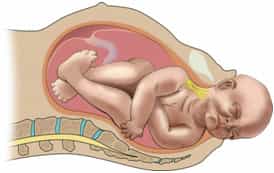Definition
A vaginal cephalic delivery that requires additional obstetric manoeuvres to deliver the fetus after the head has delivered and gentle traction has failed.
EtiologyMost cases of shoulder dystocia occur in pregnancies with no risk factors.
- Foetal macrosomia (>4.5kg)
- Gestational diabetes
- Foetal weight >4kg
- GD alters fetal fat distribution, leading to broad shoulders which may get caught at the pelvic outlet
- Instrumental delivery
- Slow first stage
- Prolonged second stage
- Shoulder dystocia in previous deliveries

- “Turtle neck sign”
- Failure to complete delivery in the push after the head is delivered
Shoulder dystocia is a clinical diagnosis.
ManagementHELPERR:
- H – Help! Call for immediate assistance.
- E – Episiotomy. Evaluate and be prepared to perform, to facilitate access for later manoeuvres.
- L – Legs up. McRobert’s position.
- P – Pressure. Direct pressure, or angulated over the anterior shoulder (Rubin 1).
- E – Enter. Reach into the birth canal and attempt to turn the posterior (Rubin 1) or anterior (Woodscrew) shoulder.
- R – Remove the posterior arm. Attempt to sweep the arm across the baby’s body and out of the birth canal.
- R – Reposition onto all fours with back arched (Gaskin).
- R – Repeat from the top.
In extreme circumstances:
- Break the baby’s posterior clavicle
- Perform a symphysiotomy
- Zavanelli manoeuvre.
